“This week has reaffirmed to me that licensing is a diverse business.”
I caught sight of a poster for PAW Patrol Live on a train station as I returned from a meeting on the South Coast. My train had a lot of families returning from a day trip to Paultons Park – any of them had Peppa Pig-branded bags presumably after visiting the Peppa Pig area at Paultons and buying product from the shop there.
Both of these examples of live or experiential licensing are great examples of how licensed characters are being used by theatre companies and theme parks. This seems to be a rapidly developing part of the licensing mix with many licensors now employing specialist sales staff to develop business in these sectors.
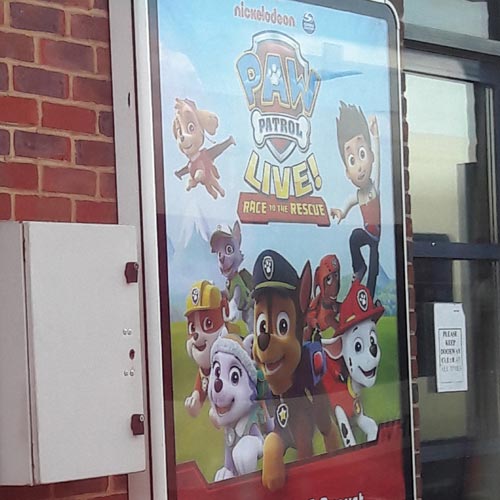
Licensing in this sector creates challenges, but in a relatively flat market it is good to see that operators in the sector value licensing and see that it can provide a competitive edge. The Peppa Pig fans on my train certainly seemed to be satisfied customers – as a rights owner eOne has found a way of enhancing the brand experience around Peppa, while also creating a new retail channel for licensees. Live events, theme park attractions and shows place characters right in the middle of family life.
Experiential licensing is not just confined to the children’s sector. This week I attended the RHS Flower Show at Hampton Court. My second RHS show of the year. It was good to see a range of licensing examples at the show – as well as a showcase for spectacular show gardens, it is also a trade show with exhibitors selling directly to the public. The RHS seem to have integrated the show and the retailing opportunity it presents into its licensing strategy. For licensees the opportunity to sell RHS branded products at a RHS branded show must be quite attractive.
The RHS has been very effective at developing licensed products and partnerships outside of the norm.
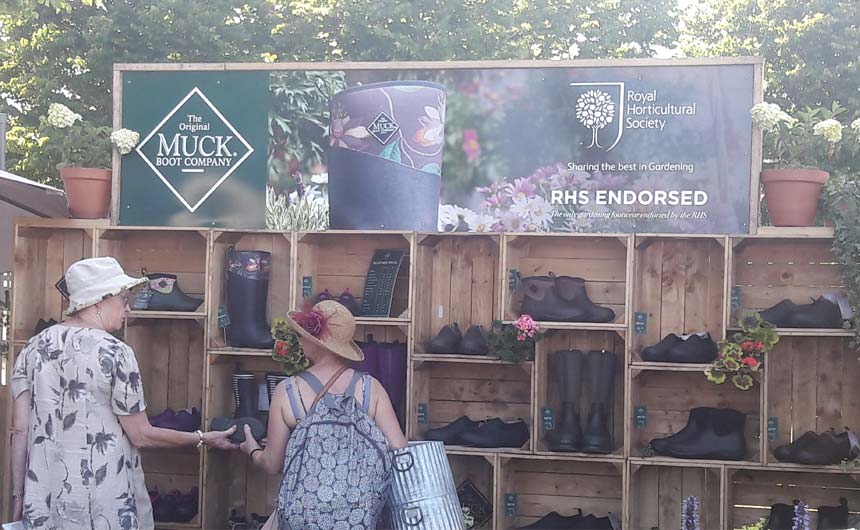
A couple of examples included Scotts of Thrapston’s RHS Garden Buildings. Scotts was able to show the garden buildings in garden settings and used the RHS endorsement well on its stand. Another example that caught my eye was The Muck Boot Company‘s RHS endorsed footwear including wellington boots. In both these cases the RHS link was primarily an endorsement rather than a design direction, but I expect consumers found the endorsement reassuring and in the context of the live event probably a deal clincher.
It is interesting to see how the RHS has developed a mixed licensing programme that includes design lead products such as the eye-catching Burgon & Ball range featured on the RHS’ own stand with more high ticket priced technical items such as Scotts’ garden buildings. The RHS has used its position of authority and trust well, blending the licensing programme well with the live event programme.
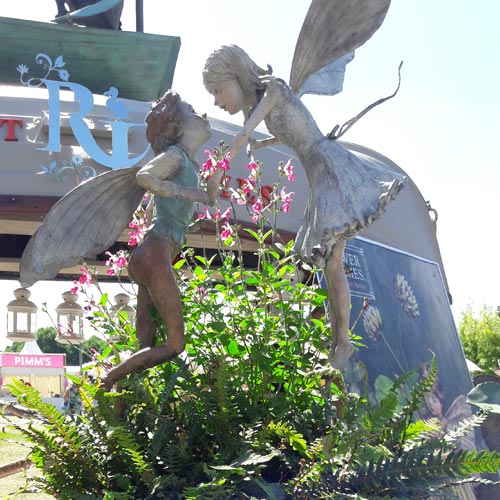
It was also good to see Flower Fairies‘ licensee Robert James at Hampton Court – I spotted them at the Chelsea Show where they launched the Flower Fairies bronzes; it seems the launch has gone well and the product has been well received. The product and stand was recognised at Hampton Court with a 4 Star Trade stand Award the highest accolade for a trade stand. This was no doubt in part due to the clever use of Flower Fairies – a really good example of licensing working well.
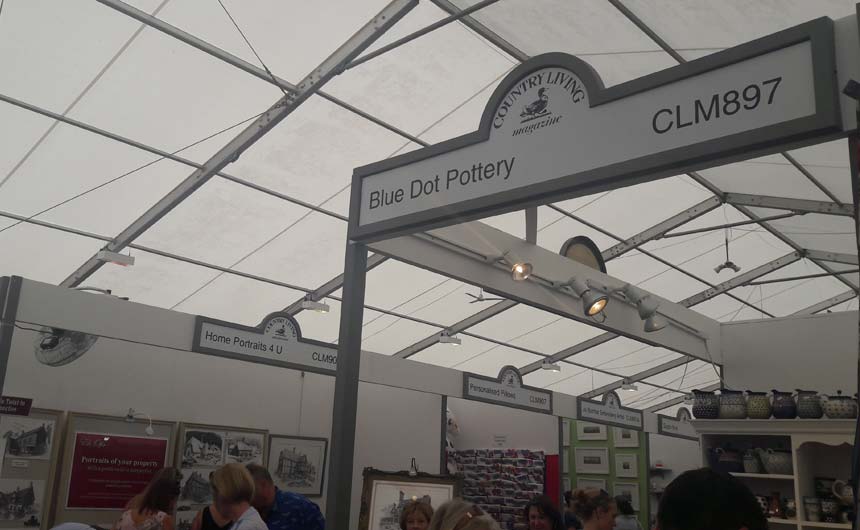
Another feature area at the show was a Country Living pavilion – a range of retailers housed in a marquee managed in association with the magazine. Not sure what the deal was between the RHS and Country Living but it is another example of how a lifestyle brand can be activated in a live context. I guess the RHS visitor and Country Living reader have a lot in common.
Indeed Country Living used this opportunity to showcase its own licensing range – a range of Country Living sofas from DFS. This is a really good example of an integrated approach to licensing – the fabrics being chosen and developed in conjunction with Country Living staff and no doubt promoted regularly in the magazine.
For DFS it adds variety to its range, creates a strong media lead partnership and provides a clear point of difference in a competitive marketplace.
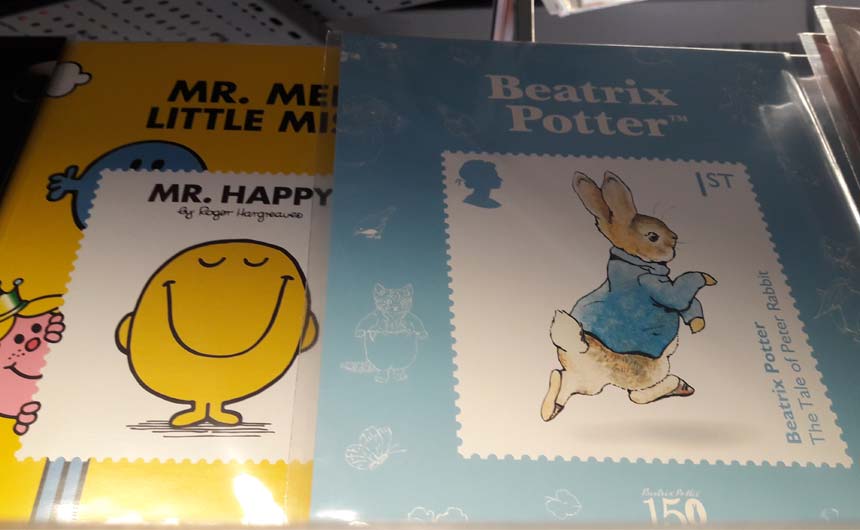
Earlier in the week I spotted a Royal Mail product range in WH Smith featuring licences such as Mr Men Little Miss, Star Wars and Peter Rabbit. Billed as an ‘Exclusive Royal Mail Souvenir Stamp Collection’ the product had prominent display space and was well signposted in store. This product has grown out of the collaboration that the Royal Mail has had with these licensors over stamp issues. It is a clever use of the licences and a good way of extending the partnerships.
For Royal Mail, it is using popular licences in a gift context in a way that might recruit more collectors and future purchasers for it. Selling stamps in this way in a new retail channel is welcome new distribution. For the rights holders working with it, Royal Mail has created a new opportunity in a new category with a new partner – all very welcome in a tough market. Seeing their IP on stamps is also a welcome boost to any programme – a real stamp of approval…
This week has reaffirmed to me that licensing is a diverse business which provides companies with a range of ways to use IP in progressive ways. As an industry we need to continue to be alert to the potential in new markets and services for licensing to make a difference.
Ian Downes runs Start Licensing, an independent brand licensing agency. His Twitter handle is @startlicensing – he would welcome your suggestions for what to look out for.































